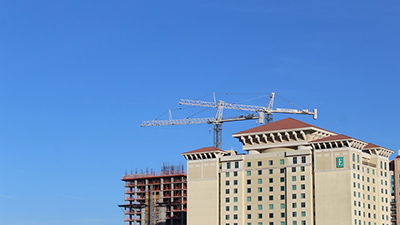
Commercial Construction Costs Continue to Escalate

Commercial real estate construction costs continue to increase, reported Rider Levett Bucknall, Honolulu.
Construction costs increased 1.58 percent nationally during the first quarter, yielding an 8.04 percent increase year-over-year, the RLB Construction Cost Report said.
“While the surge of the COVID-19 Omicron variant is subsiding, pandemic-induced problems remain,” said RLB Principal Cathy Sewell. “Supply chain issues continue to plague all levels of the construction industry, from raw materials to finished products, as pent-up demand for building supplies grows. A spike in fuel prices and a shortage of truck drivers are still slowing overland transit of goods, a condition exacerbated by a lack of warehouse space.”
The Commerce Department reported construction put in place during January equaled $1,677 billion up 1.3 percent from the revised December estimate of $1,655 billion and up 8.2 percent from the $1,549 billion seen in January 2021.
RLB North America President Julian Anderson said the present construction situation is complicated. “While the bipartisan passage of the $110 billion Infrastructure Investment and Jobs Act [in November 2021] was a major step forward, it remains to be seen how inflation will affect its implementation,” he said.
Sewell noted significant recent events including the Russia-Ukraine war further complicate the current picture. “The conflict in eastern Europe is likely to affect costs and availability of some key materials; Russia is a major producer of copper and aluminum,” she said.
The report said Boston, Chicago, New York, Phoenix, Portland, Seattle and Washington, D.C., saw the largest annual construction cost increases, while Denver, Honolulu, Las Vegas, Los Angeles and San Francisco experienced lower annual increases.
Sewell noted the twice-yearly RLB Crane Index report found a 4.5 percent increase in construction cranes nationwide compared to six months ago. Of the fourteen cities surveyed, five had more cranes, six held steady and three reported fewer cranes.
“We expect the crane count to remain steady, as many projects are experiencing delays in their schedules due to supply chain issues and construction costs continue to climb up, giving some developers hesitancy to break ground at this time,” Sewell said.
